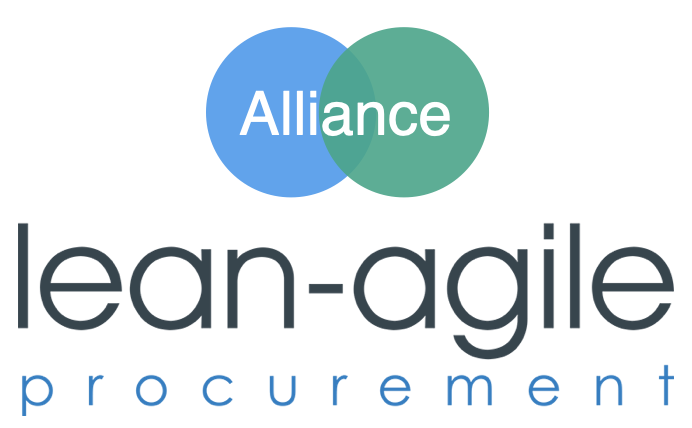
Contract Types
Outcome-based Extreme
Outcome-based Extreme Contract
Characteristics
Category
Iron Triangle
In an Outcome-based Extreme contract, the scope and costs are variable, allowing for adjustments as the experiments progress, while the time and quality are managed according to the agreed terms.
Agile Contract?
Yes, an Outcome-based Extreme contract can be considered as the most extreme form of an Agile contract because it allows for flexibility in scope and adaptability to changes.
An Outcome-based Extreme Contract specifies clear targets or outcomes and compensates the vendor based on the satisfaction with the results delivered. This contract type is ideal for collaborative relationships that emphasize joint experimentation and exploration. It provides flexibility in achieving the targets, promoting innovation and adaptability in finding the best solutions.
Buyers Perspective
Example
An example of an Outcome-based Extreme Contract could involve a technology company developing a custom AI solution for a client, where payment is contingent on the client's satisfaction with the AI's performance in improving operational efficiency. The contract specifies key performance indicators and timeboxes, but leaves the method of achieving these improvements open, allowing the vendor to experiment with various approaches to deliver the best possible outcome.
Also known as
Performance Satisfaction Contract, Satisfaction-based Contract, Outcome-driven Experimentation Contract, Results Satisfaction Agreement, Experimental Outcome Contract, Flexible Performance Contract, Success-dependent Compensation Contract, Innovation-driven Outcome Contract
Vendors Perspective
From the vendor's perspective, an Outcome-based Extreme Contract offers the opportunity to explore innovative and creative approaches to meet the buyer's needs. While this contract type allows for significant flexibility in execution, it also involves a higher level of risk, as payment is contingent on the buyer's satisfaction with the results. The vendor must deliver high-quality outcomes to receive compensation, which can lead to substantial rewards if successful, but also requires careful management and alignment with the buyer's expectations.
From the buyer's perspective, an Outcome-based Extreme Contract provides a high level of flexibility and encourages the vendor to deliver innovative solutions tailored to specific needs. The buyer benefits from paying only when they are satisfied with the results, ensuring that the vendor's focus remains on achieving high-quality outcomes and meeting or exceeding expectations. This arrangement allows the buyer to mitigate risk and potentially access cutting-edge solutions that emerge from the vendor's experimentation.
Optimal if
An Outcome-based Extreme Contract is optimal when a project requires innovative solutions and flexible approaches to meet specific, high-impact outcomes, especially in dynamic or uncertain environments. It is particularly suited for scenarios where the buyer wants to minimize risk by paying only for satisfactory results, while providing the vendor the freedom to experiment and achieve the desired objectives.
Challenges
Unclear Satisfaction Criteria: Defining and agreeing upon what constitutes "satisfaction" can be subjective and lead to disputes over whether the contract terms have been met.
High Risk for Vendors: The vendor bears significant risk, as payment is contingent on the buyer's satisfaction, which can be influenced by factors beyond the vendor's control.
Difficulty in Measuring Outcomes: Establishing clear, measurable, and agreed-upon outcomes can be challenging, especially for complex or innovative projects.
Potential for Misaligned Expectations: There may be a misalignment between the buyer's expectations and the vendor's understanding of the project goals, leading to dissatisfaction.
Incentive for Over-Promise: Vendors may feel pressured to over-promise results to secure the contract, leading to unrealistic expectations and potential disappointment.
Variable Compensation: The vendor's compensation is highly variable, creating uncertainty and making financial planning difficult.
Extended Negotiation Period: The need to clearly define satisfaction criteria and outcomes can prolong the contract negotiation process.
Limited Buyer Control: The buyer may have less control over the methods used by the vendor, which can be a concern if the approach taken differs significantly from initial expectations.
Advantages
Encourages Innovation: The flexibility in achieving outcomes allows vendors to experiment and explore innovative solutions, potentially leading to breakthrough results.
Alignment of Incentives: The vendor's compensation is directly tied to the buyer's satisfaction, aligning the vendor's incentives with delivering high-quality, impactful outcomes.
Risk Mitigation for Buyers: Buyers pay only if satisfied with the results, reducing the risk of investing in a project that does not meet their expectations.
Focus on Results: The contract emphasizes achieving specific outcomes, ensuring that all efforts are directed towards delivering tangible value.
Adaptability: Vendors have the freedom to adjust their approach as the project evolves, allowing for adaptability in response to new information or changing circumstances.
Potential for High Rewards: Vendors who successfully deliver exceptional outcomes can achieve significant financial rewards, making this contract type attractive for those confident in their capabilities.
Efficiency and Cost-effectiveness: By focusing on desired outcomes rather than specific processes, vendors can find the most efficient and cost-effective ways to achieve the project goals.
Enhanced Collaboration: The nature of the contract fosters a collaborative relationship, with both parties working closely to define and achieve the desired outcomes.
Quality Assurance: The emphasis on buyer satisfaction ensures that vendors maintain high standards of quality throughout the project.
4o


